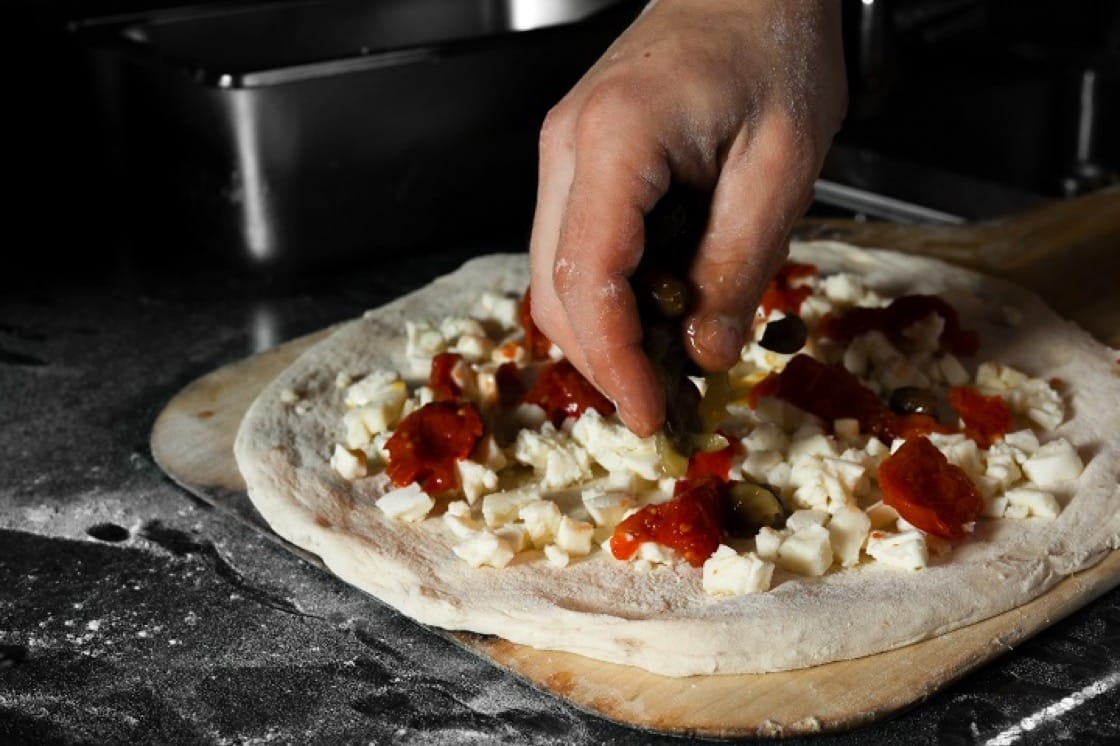Recently, his first overseas venture, Kytaly, landed in Central, Hong Kong. Among the 19 deftly baked options is the Margherita Sbagliata (or the “wrong Margherita”), which has been named the Best Pizza in the World from 2016 to 2018.
Having seen the definition of the pie stretched to a whole range of shapes, toppings, thicknesses and cooking methods, the maestro of pizza spoke about his favorites and what to pay attention to while hunting down the very best of the best.

Do you prefer round or rectangular pizza?
Shape isn’t the deciding factor of a pizza’s quality. Round and rectangular pizzas are both great. But my personal favorite is the classic Neapolitan round pizza, just like the one we sell at the shop. For rectangular pizza, the dough is thicker than the traditional round pizza and needs to be roasted on a frying pan at a different temperature so the crust gets crunchier. I recommend trying both varieties in order to understand that even with the same dough the outcome could be totally different when it is cooked at different temperatures.
Should a good pizza be handmade or machine-made?
Some people use specific dough kneading machines to make pizza. The machine would do all the hard work and combine all the ingredients together. But that’s not my style. I choose to knead the dough by hand. I am the third generation from my family to work in this industry. Hand-kneaded dough is absolutely a tradition. My grandfather did that in the 1930s; my father worked the dough with his hands every night in the 1960s; now I, and my son, carry this tradition forward.
Kneading by hand helps you bond with the dough better. Through touching and feeling, you understand the transformation of flour. One would completely lose this ability to feel the subtle changes of the dough if he used the machine do the kneading. I believe there’s additional value in hand-kneaded dough. It does a better job delivering the feelings of the pizza maker.

Do you prefer Neapolitan or Roman pizza?
You can’t judge if a pizza is good or not simply by the fact that it’s Neapolitan or Roman. They are so different in terms of taste, shape and overall style. Whether you are in Naples or Rome, you will encounter good pizzas and bad pizzas.
Pizza is so popular in the world nowadays. Everyone has their own way to taste and interpret it. My pizza isn’t considered to be the traditional Neapolitan style, but it represents my family and our baking journey over 80 years. “Good” is a relative concept—it shouldn’t be applied to different types of pizzas. Differences in style and mode of preparation make different pizzas.
Do you prefer the crust to be thick or thin?
Some pizzas have an oversized crust; some have none of it. I like the medium. The crust on the outside should be well-proportioned with the toppings inside.

Do you prefer eating alone or sharing with someone else?
Both are fine. You can taste it alone and make comparisons. I suggest the latter—assembling a group of six to seven people, ordering six to seven types of pizzas and tasting a slice of everything. This way, you can observe, compare and exchange ideas, judging the taste with multiple perspectives. It’s a great gastronomic experience. It’d be even better to pair it with red wine, Champagne or craft beer.
This story is written by Hsieh Ming Ling and translated by Vincent Leung. To read the original article, click here.















